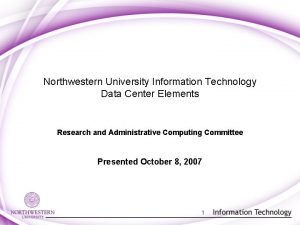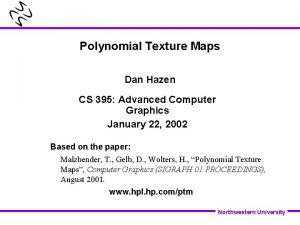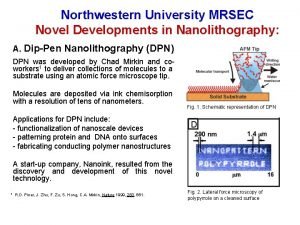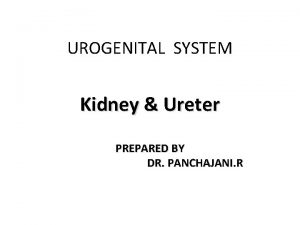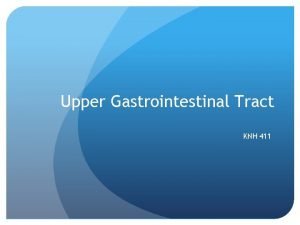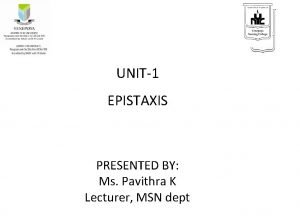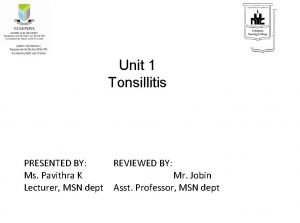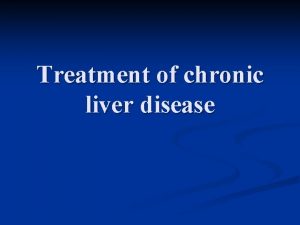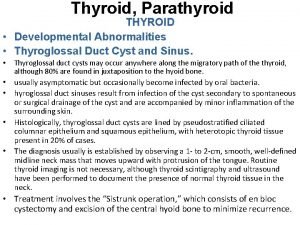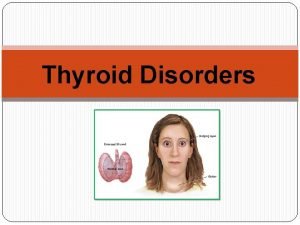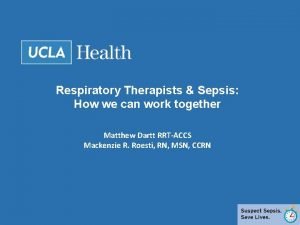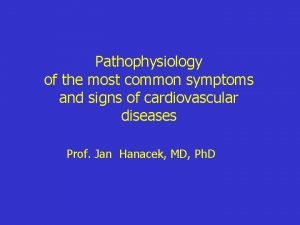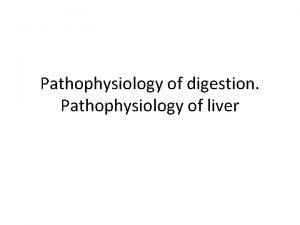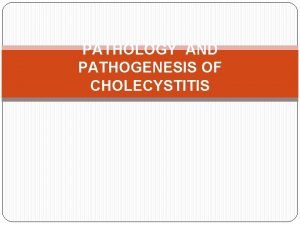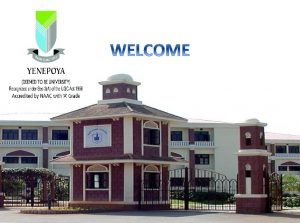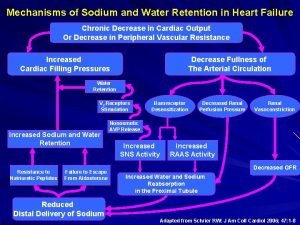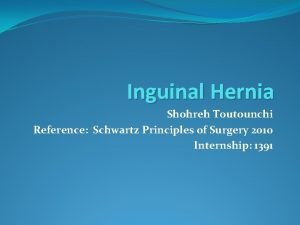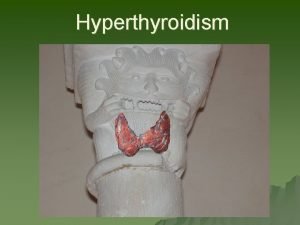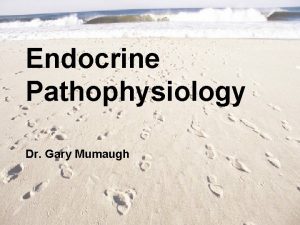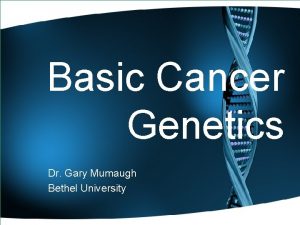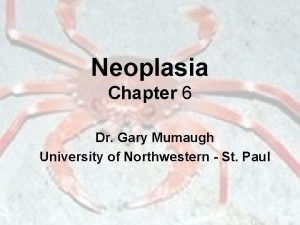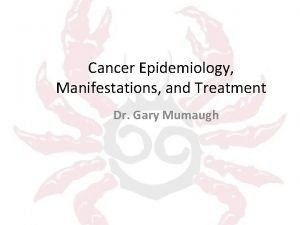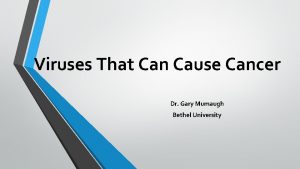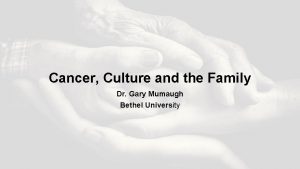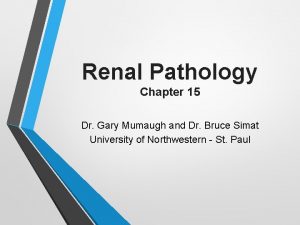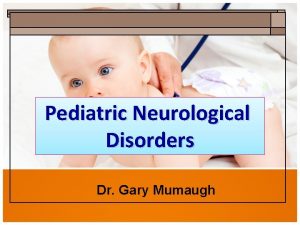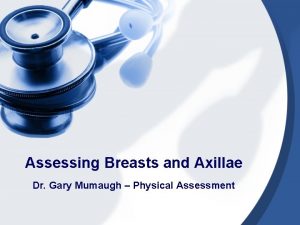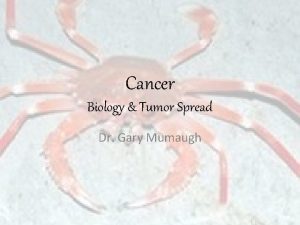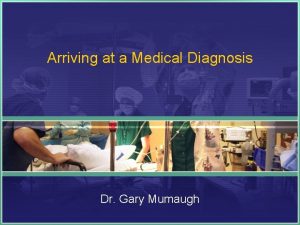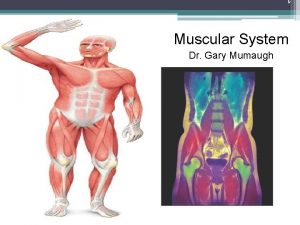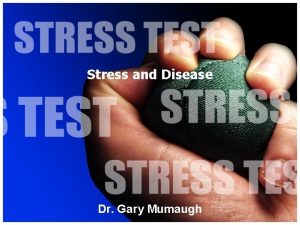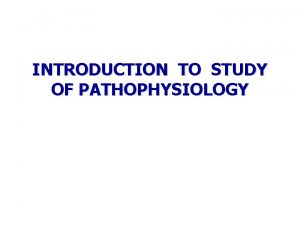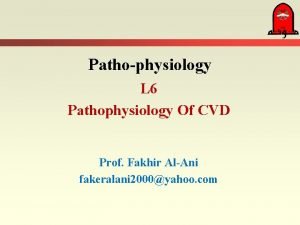Pathophysiology Introduction Dr Gary Mumaugh University of Northwestern






















- Slides: 22

Pathophysiology Introduction Dr. Gary Mumaugh University of Northwestern - St. Paul

Pathophysiology Basics Pathology • Study of disease • Described in terms of the structural or anatomical changes Pathophysiology • Study of the physiology of disease • Described in terms of the functional changes of the disease

Etiology Study of the causative agent(s) of disease In medicine, we record the etiology as E. A. in the patient’s chart etiological agent

Major Classifications of Etiology • Endogenous etiology • Exogenous etiology • Acquired etiology • Degenerative disorders • Abnormal immunity • Neoplasms • Psychosomatic disorders • Psychiatric causes • Iatrogenic

Endogenous Etiology • From “inside of” • Genetically linked and predetermined • Genes are responsible for defects • Autosomal dominant disorders • 50% chance if 1 parent has the gene • Achondroplasia – a form of dwarfism • Huntington’s disease – leads to psychiatric conditions and dementia • BRACA 1 & BRACA 2 – leads to breast and ovarian cancer increases • Cystic kidney disease and polycystic kidney disease • Osteopetrosis – “stone bone” • Polycystic liver disease

• Autosomal recessive disorders • Gene must be may not have the disease but carry the gene • 25% chance of transmission to offspring • Phenylketonuria (PKU) • Sickle cell disease • Cystic Fibrosis

• Sex linked diseases • Comes from the X chromosome – mother • Duchenne muscular dystrophy • Hemophilia • Color blindness • Genetic predispositions • The abnormal gene is 100% responsible for the disease • Lifestyle does NOT play a factor in pathogenesis • In most disease processes, there is some genetic predisposition • BRACA 1 & BRACA 2 genes are good examples

• Chromosomal disorders • Can be caused by environmental factors in the first trimester • Teratogen - anything that can cause a defect of the developing fetus. • Fetal alcohol syndrome • Ionizing radiation, medications or other factors • Can also be a true chromosomal abnormality • trisomy 21 - Down’s Syndrome • trisomy 18 – Edward’s Syndrome – small organs, size & heart • Spina bifida, cleft palate, etc.

Exogenous Etiology • Any environmental factor that occurs after conception and before birth • Defect happened during development in utero genes are intact • Often referred to as environmental factors • Examples: Fetal Alcohol Syndrome, Spina Bifida, Cleft Palate, etc. • Infections – viruses, bacteria, parasites, protozoa • Chemical toxins – can affect the body locally or systemically • Physical agents – trauma, electrical, radiation • Nutritional factors – folic acid for brain development

Acquired Etiology • Defect resulted from post-birth exposure • Can also be from the reasons above • Infections, chemical toxins, physical agents, nutritional factors

Degenerative Disorders • Osteoarthritis • Degenerative disc disease • Macular degeneration • Parkinson’s disease • Alzheimer’s disease • ALS • Osteoporosis

Abnormal Immunity • Immunocompromised patients • Autoimmune diseases Immunocompromised Vs. Immunocompetent

Neoplasms - Cancer • Neo = new plasm = tissue growth • Benign vs. malignant

Psychosomatic Factors • The mind affecting the body and the other way around • Consider psychoneuroimmunology

Psychiatric Disorders • Neurosis disorders are mental disorders caused by an outside environment factor • Example is a person who has had a loss and now has symptoms as in grief, etc. • Psychotic disorders start in the mind and not in the environment • May have hallucinations, delusions, etc. • Schizophrenia, bipolar disorder, paranoid psychosis

Iatrogenic Causes • “Iatro” in Latin means Doctor • Diseases caused by treatment • Examples – medication side effects, sequela of treatments and surgery, post surgical damage, etc.

Pathophysiology Basics • How do medical professionals respond to patients with disease? • Establish a Medical History • “Timeline” of nature and severity of signs/symptoms • The medical history will contain many parts

Pathophysiology Basics Signs- Observable manifestations of disease (e. g. rash, fever, etc. ) Symptoms- Only felt by the patient (e. g. aches, nausea, pain, etc. ) Syndrome- The characteristic signs and symptoms of a given disease • • Perform a Physical Examination Compile the Findings- Collection of results from physical exams, lab tests, imaging, etc.

Pathophysiology Basics • Pathogenesis • The pattern of development of a disease in a patient • Is the normal course of the disease? • Each disease has its own syndrome, which is a specific set of subjective complaints and objective findings • This is referred to as the differential diagnosis • Sequela • Any physical condition resulting from a disease • Examples?

• Diseases can differ in terms of time course and severity: • Acute- Rapid onset, and shorter duration • Chronic- Onset may vary, but duration is usually much longer • Diseases can differ in terms of location: • Local- Confined to one region of the body • Systemic- More widely distributed

Pathophysiology Basics • Diagnosis- The conclusion reached from analyzing medical history and findings • Therapy • Treatment of the disease based on the diagnosis • May attempt to cure disease or just alleviate signs and symptoms • Prognosis • Assessment of patient’s response to therapy • Will typically be established in a similar manner as the diagnosis

Clinical Case History Review Lets consider a 85 year old female with right side congestive heart failure (CHF) What is the pathology of this disease? What is the pathophysiology of this disease? What is the etiology? What are the signs and symptoms? What is the prognosis? Is there any sequela?
 Northwestern university mn pseo
Northwestern university mn pseo Northwestern mailroom
Northwestern mailroom Northwestern free software
Northwestern free software Northwestern electrical engineering
Northwestern electrical engineering Northwestern university
Northwestern university Syrgkanis
Syrgkanis Perinephric abscess symptoms
Perinephric abscess symptoms Dumping syndrome pathophysiology
Dumping syndrome pathophysiology Trotter's position epistaxis
Trotter's position epistaxis Tonsil grading scale
Tonsil grading scale Hepatic encephalopathy pathophysiology
Hepatic encephalopathy pathophysiology Thyroglossal cyst pathophysiology
Thyroglossal cyst pathophysiology Hyperthyroidism hypokalemia
Hyperthyroidism hypokalemia Neonatal sepsis pathophysiology diagram
Neonatal sepsis pathophysiology diagram Pathophysiology signs and symptoms
Pathophysiology signs and symptoms Digestion
Digestion Pathogenesis of cholecystitis
Pathogenesis of cholecystitis Thyroid storm nursing interventions
Thyroid storm nursing interventions Pathophysiology of sodium and water retention
Pathophysiology of sodium and water retention Taxis in hernia
Taxis in hernia Multinodular goiter pathophysiology
Multinodular goiter pathophysiology Carbimasole
Carbimasole Pathophysiology of hirschsprung disease
Pathophysiology of hirschsprung disease

